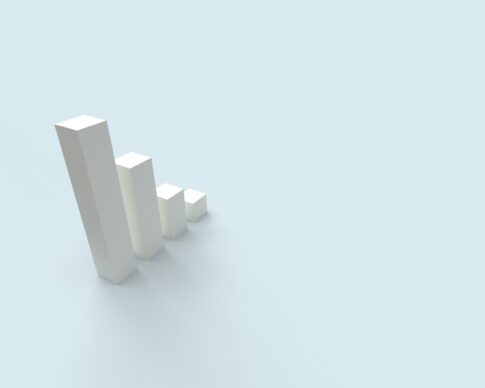今日は、次のサイトを解説します。(AI生成)
The 10-year JGB yield has continued to push higher to 1% together with 3-month and 6-month overnight indexed swap (OIS) rates in Japan at 0.12% to 0.17%
The JPY has failed to strengthen despite the bullish movements in JGB yields and OIS rates.
Broad-based US dollar strength and the deceleration in the lagging core-core CPI inflation trend are the main drivers of short-term JPY weakness.
Watch the key short-term support of 155.90 on the USD/JPY.
This is a follow-up analysis of our prior report, “USD/JPY: Conflicting factors at play, sideways for now in the short-term” published on 20 May 2024. Click here for a recap.Since our last publication, the price actions of USD/JPY have continued to hold above its 20-day moving average acting as a support at 155.90 at this juncture despite a rise in both the 10-year and 30-year Japanese Government Bonds (JGB) yields since the start of this week to 1% (its highest level in almost 12 years) and 2.17% respectively (see Fig 1).JGB yields and overnight index swap rates are pointing to a possible BoJ rate hike in JulyFig 1: JGB yields medium-term & major trends as of 24 May 2024 (Source: TradingView, click to enlarge chart)Fig 2: Japan Overnight Indexed Swap Rates major trends as of 24 May 2024 (Source: MacroMicro, click to enlarge chart)Even the overnight indexed swap rates (OIS) for 3-month and 6-month have risen at a faster pace to 0.12% to 0.17% over the 1-month OIS and their spreads have widened significantly which suggests the OIS market is pricing a higher chance of another Bank of Japan (BoJ) interest rate hike in the July meeting (see Fig 2).So, what is causing the failure of the yen to stage a short-term bullish reversal?Deceleration of consumer inflationary trend in JapanFig 3: Japan Producer & Consumer Price Indices as of April 2024 (Source: TradingView, click to enlarge chart)Inflation data is one of the key matrices to guide BoJ’s path of normalizing its decade-long ultra-accommodative monetary policy after ending its short-term negative interest rate in March.BoJ Governor Ueda has implied in his public speeches that an interest rate hike cycle in Japan can only take shape if the inflation trend maintains a virtuous cycle of sustained, stable achievement of BoJ’s 2% target coupled with strong wage growth.So far, Japan’s producer prices (PPI) have started to show signs of turning the corner after close to a year of deceleration from December 2022 to January 2024. In the past four months, the PPI has risen to 0.9% y/y in April from 0.2% y/y printed in January.An interesting point to note is that the PPI tends to bottom out ahead of Japan’s consumer inflation as seen in the three past periods of August 2009, June 2016, and May 2020 (see Fig 3).So far, the Japan core-core CPI (excludes fresh food and energy) which is closely watched by BoJ as a key gauge of broader inflation trends in Japan has failed to turn around and continued its path of deceleration since August 2023. It rose at a slower pace in April to 2.4% y/y from 2.9% y/y in March.Broad-based US dollar strength revivalFig 4: 5-day rolling performance of the US dollar against major currencies of 24 May 2024 (Source: TradingView, click to enlarge chart)The US dollar has strengthened across the board against other major currencies reinforced by a further recovery in the US Treasury yields in place since last Friday, 17 May, and the 10-year yield is now just a whisker away from a key 4.50% technical level after it rallied by 16 basis points from last Wednesday low of 4.31% to yesterday, 23 May closing level of 4.48%.So far, based on a 5-day rolling performance basis, the JPY is the third major weakest currency against the US dollar with the USD/JPY recording a gain of +0.8% at this time of the writing and surpassing the return of the US Dollar Index at +0.6% (see Fig 4). USD/JPY has held above its 20-day moving average for 5 consecutive daysFig 5: USD/JPY medium-term & major trends as of 24 May 2024 (Source: TradingView, click to enlarge chart)Fig 6: USD/JPY short-term trend as of 24 May 2024 (Source: TradingView, click to enlarge chart)The short-term uptrend phase of the USD/JPY remains intact, supported by a rising daily RSI momentum indicator that is above the 50 level, and has yet to reach its overbought level of above 70 (see Fig 5)Watch the key short-term pivotal support at 155.90 (also the 20-day moving average) to maintain the short-term bullish tone for the next near-term resistance to come in at 158.00 and above it sees the 159.60/160.30 long-term pivotal resistance zone (see Fig 6).On the other hand, a break below 155.90 invalidates the bullish bias for a minor corrective slide to expose the next near-term supports at 154.30 and 153.70 (also the 50-day moving average).Content is for general information purposes only. It is not investment advice or a solution to buy or sell securities. Opinions are the authors; not necessarily that of OANDA Business Information & Services, Inc. or any of its affiliates, subsidiaries, officers or directors. If you would like to reproduce or redistribute any of the content found on MarketPulse, an award winning forex, commodities and global indices analysis and news site service produced by OANDA Business Information & Services, Inc., please access the RSS feed or contact us at info@marketpulse.com. Visit https://www.marketpulse.com/ to find out more about the beat of the global markets. © 2023 OANDA Business Information & Services Inc.
ドル円纺替分析:日本国債とOISレートの動向
最近の市場では、10年物の日本国債(JGB)の利回りが1%に上昇し、3ヶ月物と6ヶ月物のオーバーナイトインデックススワップ(OIS)レートも0.12%から0.17%に上昇しています。これにもかかわらず、円は強気な動きにも関わらず強化されていません。米ドルの全面的な強さと、日本のコアコアCPIインフレーションの減速が、短期的な円安の主な要因です。USD/JPYの短期サポート155.90円に注目してください。
日本国債利回りの上昇とその影響
日本国債の利回りが上昇している現状は、日本銀行(BoJ)の金利引き上げの可能性を示唆しています。特に、10年物と30年物の国債利回りが今週始めに1%と2.17%に上昇しました。これは、ほぼ12年ぶりの高水準です。
OISレートの変動と日銀の金利政策への示唆
OISレートは、金融機関間での短期金利の期待を表す指標で、3ヶ月物と6ヶ月物のOISレートが1ヶ月物よりも速いペースで上昇しています。これは、市場が7月の日銀会合でのさらなる金利引き上げの可能性を織り込んでいることを示しています。
円の弱含みと米ドルの強さの背景
米国の財務省債の利回りが回復し、米ドルは主要通貨に対して強さを見せています。これにより、USD/JPYは5日間のローリングベースで+0.8%の上昇を記録し、米ドル指数の+0.6%のリターンを上回っています。
為替取引戦略:USD/JPYのサポートとレジスタンス
USD/JPYの短期サポート155.90円の重要性
USD/JPYは、20日移動平均線をサポートとして上回り、短期的な上昇トレンドが継続しています。次の近期抵抗帯は158.00円で、それを上回ると159.60円から160.30円の長期的な重要な抵抗ゾーンが見込まれます。
為替レートの抵抗帯と今後の見通し
一方で、155.90円を下回ると、強気の見方が無効となり、次の近期サポートである154.30円や153.70円(50日移動平均線)への修正が見込まれます。
日本のインフレ動向とその為替市場への影響
日本の消費者物価指数の減速と金融政策
日本のインフレデータは、日銀が長年にわたる超緩和的な金融政策を正常化する道筋を決定する上での重要な指標です。日本の生産者物価指数(PPI)は、減速の兆しを見せた後、4月には前年同月比0.9%に上昇しました。
生産者物価指数の動きと円相場への影響
PPIは、過去にも消費者物価指数よりも先行して底打ちする傾向があり、円相場にも影響を与える可能性があります。
米ドルの強さと日本のインフレ指標の関連性
日本のコアコアCPIは、日銀が注視する広範なインフレトレンドの主要な指標であり、4月には前年同月比2.4%に減速しました。これは、米ドルの強さと相関している可能性があります。











